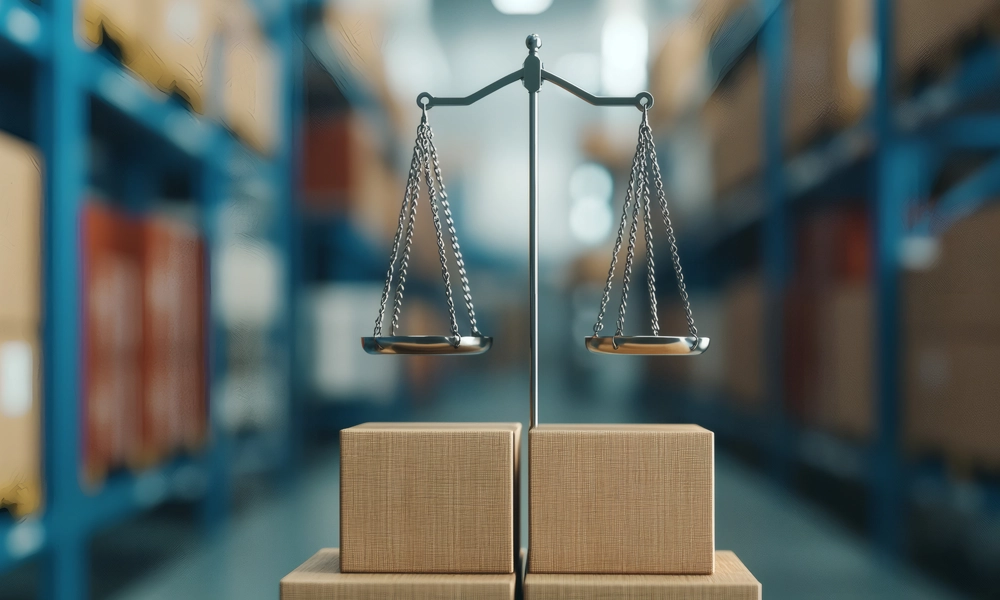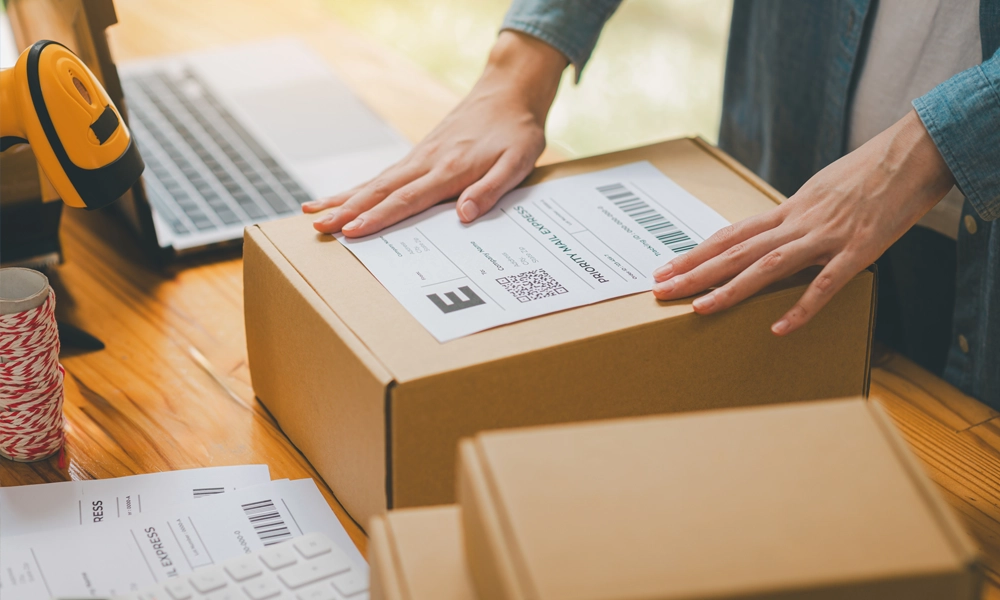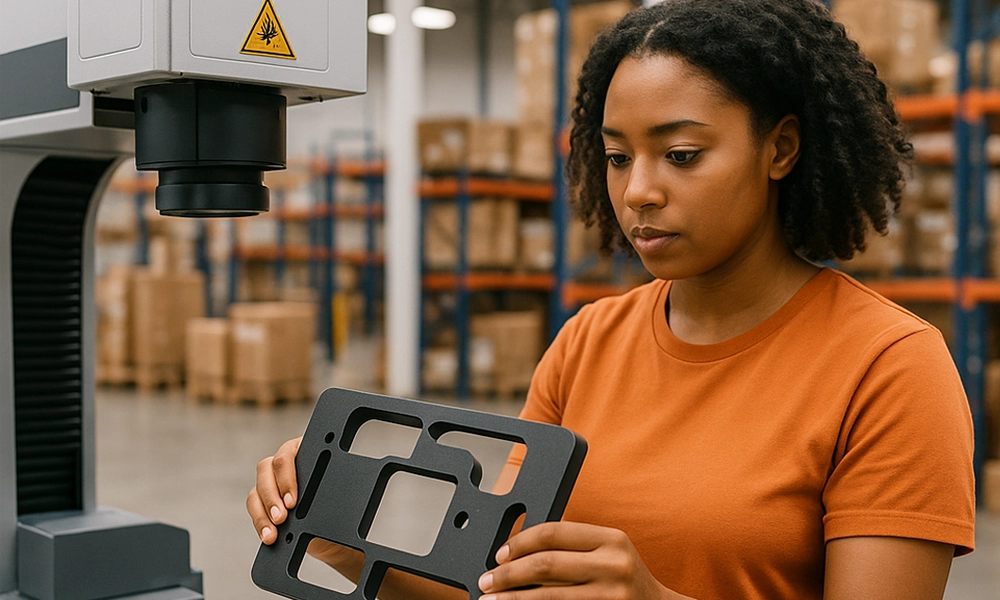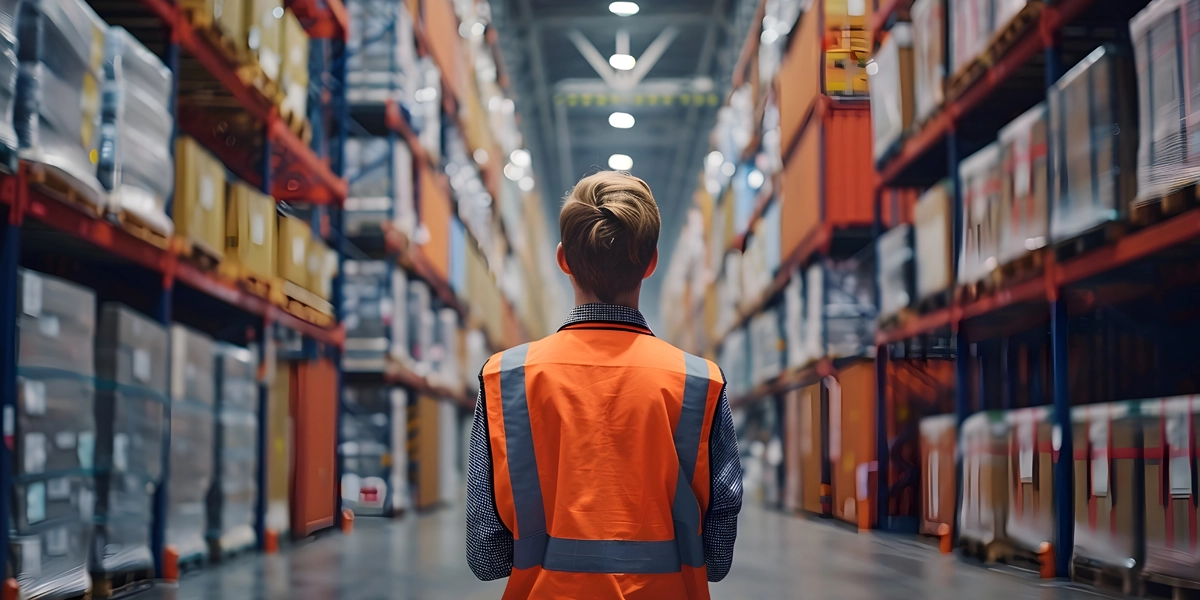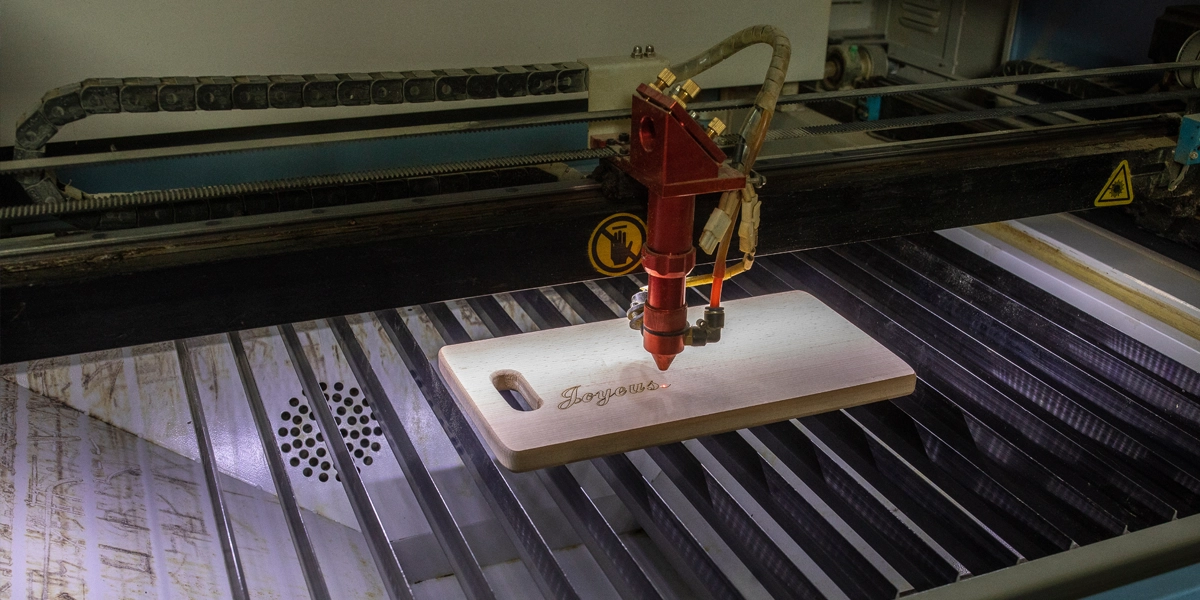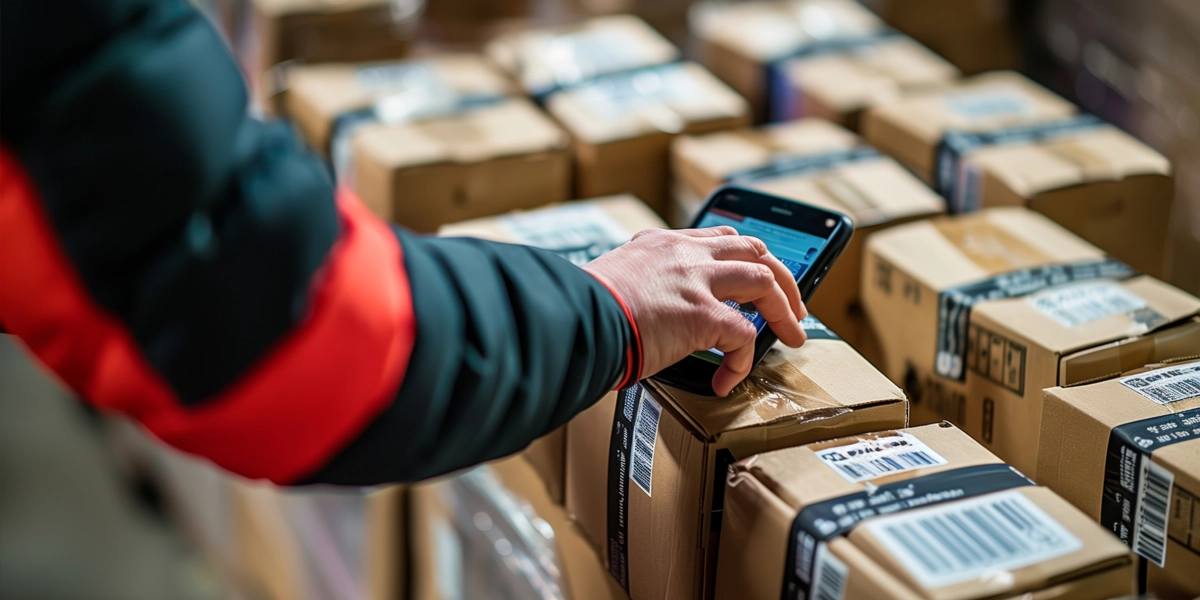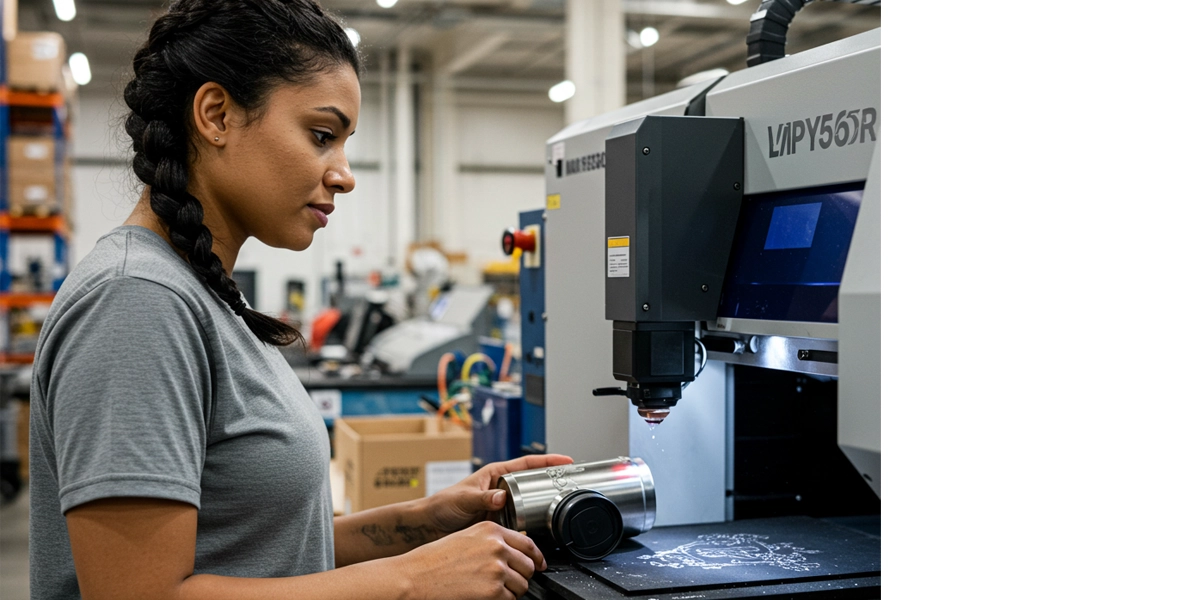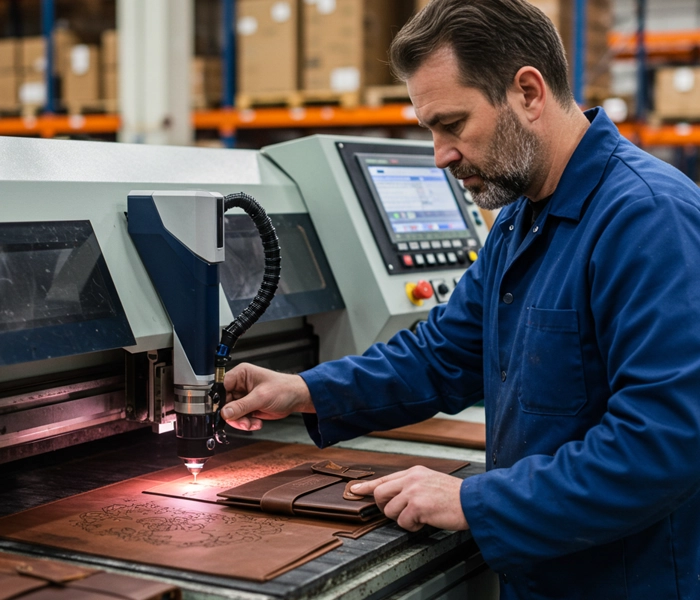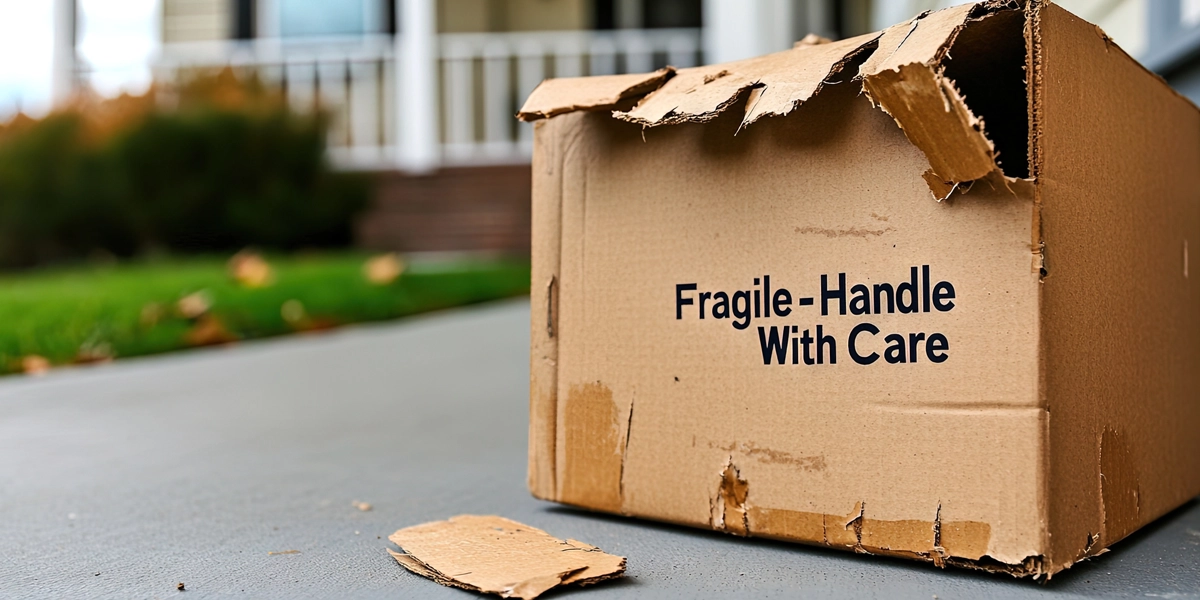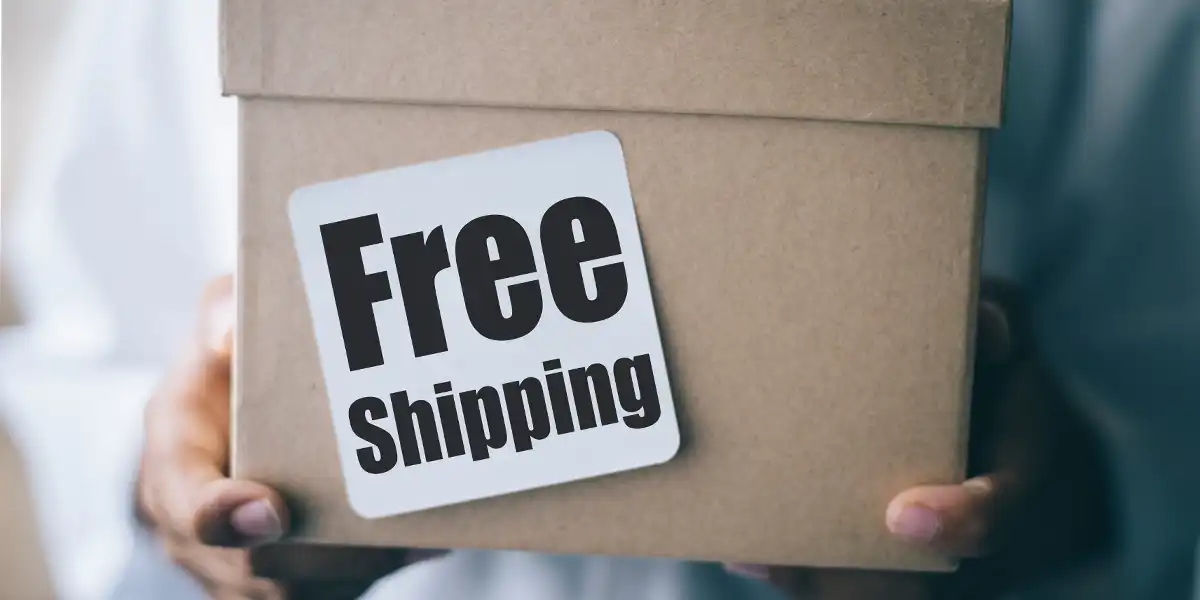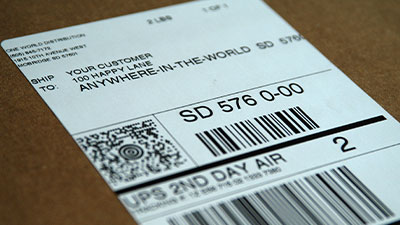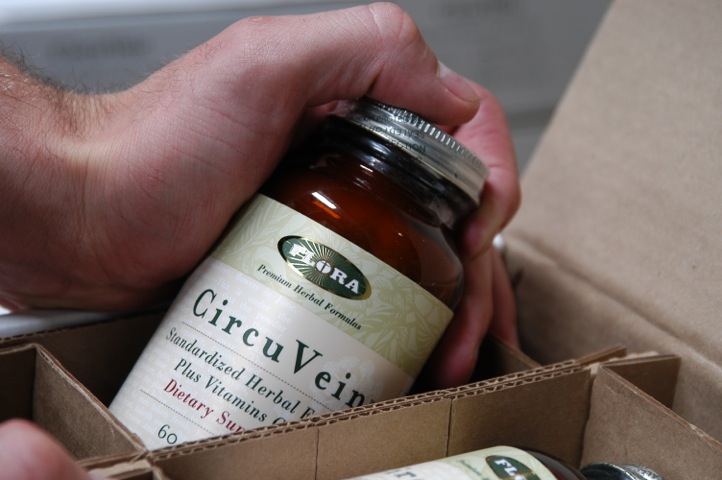In This Article:
First-mile and last-mile delivery are critical steps in the supply chain and logistics process. First-mile delivery refers to the initial phase where goods are picked up from the sender, such as a manufacturer or supplier, and transported to distribution centers or hubs. On the other hand, last-mile delivery involves transporting items from these hubs to their final destination, usually the customer’s doorstep.
To recognize how products get delivered from manufacturer to customer, ecommerce sellers need to optimize their delivery procedures from start to finish. Customers expect quick, reliable, and transparent deliveries. Businesses that optimize their first and last-mile logistics gain a competitive edge by enhancing customer satisfaction and brand loyalty. As shipping rates continually increase, you’ll need to evaluate your fulfillment process to discover where you can reduce logistics costs without compromising performance.
This article everything you need to know about first and last-mile delivery:
First Mile Delivery
- The essential role of first-mile delivery
- Challenges faced in the first-mile process
- Strategies for improving first-mile efficiency
Last Mile Delivery
- An overview of last-mile delivery
- The importance of a seamless last-mile experience
- Managing reverse logistics in the last mile
- Contrasting objectives and challenges between first and last-mile delivery stages
What is First-Mile Delivery?
First-mile delivery refers to the initial stage of the logistics process. This critical phase involves picking up goods from the sender — whether a manufacturer, retailer, or ecommerce company — and transporting them to distribution centers or hubs. It’s the starting point of the supply chain journey. Here are the key steps involved in first-mile delivery:
- Picking: Customer orders are efficiently prepared and delivered to the dispatch center.
- Packaging: The picked orders are checked, conditioned, and transported to the dispatch center. It is crucial to pack efficiently to ensure a seamless check-in process at the next facility. Additionally, make sure that items are packaged according to the receiving guidelines of the next warehouse or facility. All order documentation is printed and processed.
- Pickup Appointments: Once the order is processed and all documentation is completed, it is loaded onto a transport truck and delivered to its destination promptly and in good condition.
- Transportation: This involves delivering the finished product to a central facility, which may include stops at a transit warehouse.
Importance of First Mile Delivery
The first mile sets the tone for the entire logistics operation. Its efficiency directly impacts subsequent stages like warehousing, distribution, and, ultimately, last-mile delivery. Any delays or errors here can ripple through the supply chain, causing disruptions that affect overall customer satisfaction.
- Manufacturers: Timely pickup from production facilities ensures that products reach distribution centers without delays, maintaining inventory levels and production schedules.
- Retailers: Efficient first-mile processes are crucial for stocking shelves and promptly meeting consumer demand. Challenges in inventory management can lead to disruptions in the first-mile delivery process.
- Ecommerce Companies: Seamless first-mile operations enable faster order processing and shorter delivery times, enhancing the customer experience. It’s essential to ensure products are packed in a way that makes picking and packing at the fulfillment center easier. Efficient first-mile operations can help reduce picking and packing errors and streamline fulfillment, ultimately leading to a smoother and faster delivery process.
Investing in advanced tracking systems, route optimization tools, and effective communication channels can significantly boost first-mile efficiency.
A seamless integration between the first mile and subsequent stages is crucial. Understanding and optimizing first-mile delivery is not just about transportation; it’s about setting a strong foundation for your entire supply chain.
Challenges Faced in the First Mile Delivery Process
First-mile delivery comes with its fair share of challenges that can disrupt the entire logistics chain. It’s important to address these issues to maintain smooth operations and satisfy customers.
Common Obstacles in the First Mile Journey
Here are some of the main challenges that are commonly encountered during the first mile of delivery:
- Inaccurate or unclear labels on packages: This is a major problem in first-mile delivery. It can cause delays, misrouting of packages, and even lead to items getting lost.
- Improper packaging methods: Another challenge is when packages are not packed properly, especially for fragile or perishable items. This can result in damage during transit or spoilage of goods.
Inefficiencies Caused by Poor Labeling Techniques
One of the biggest pain points in first-mile delivery is having inaccurate or unclear labels on packages. This can cause a lot of inefficiencies and problems along the way:
- Delays: When packages have wrong or missing labels, they need to be reprocessed, which takes up extra time.
- Misrouting: If addresses or codes on labels are incorrect, it can cause items to be sent to the wrong destinations.
- Loss of Items: When labels are unreadable, packages are likely to get lost. Additionally, if the products do not meet their labeling requirements, improperly labeled shipments can result in fees from the receiver.
To overcome these issues, here are some best practices that businesses can follow when it comes to labeling their packages:
- Use High-Quality Labels: Opt for durable materials that can withstand different weather conditions.
- Stick to a Standardized Format: Have a consistent label design and layout for all shipments.
- Implement Automation: Make use of barcode scanners and automated labeling software to minimize human error.
The Impact of Improper Packaging on Product Integrity
Another challenge that arises in the first mile of delivery is improper packaging methods. This can greatly affect the condition and quality of products, especially those that are fragile or perishable:
- Damage in Transit: When items are not properly cushioned or when the size of the box doesn’t fit, there’s a higher chance of breakage during transportation. This will lead to dissatisfied customers and high return rates.
- Spoilage: Perishable goods requiring specific temperature control measures can spoil if not packed accordingly. This can result in financial loss and negative customer experiences.
- Inefficiency: Improper packaging can lead to wasted space in shipping containers, resulting in higher shipping costs for the business. Additionally, if packaging is not standardized or easily handled, it can slow down the fulfillment process.
To ensure that products are well-protected during the first mile of delivery, here are some strategies that you can implement:
- Tailor Packaging Materials: Use packaging materials that are specifically suited for the type of product being shipped. Establish clear guidelines for your packaging team to ensure consistency and efficiency.
- Opt for Sturdy Boxes and Padding: When dealing with fragile items, it’s important to use sturdy boxes, cushioning materials like bubble wrap or packing peanuts, and adhesive tapes designed for secure sealing.
- Consider Temperature-Controlled Options: For goods that need to be kept cold, explore packaging solutions that can maintain the required temperature throughout transit. For perishable goods, use insulated packaging or cold packs as needed.
Strategies to Improve First-Mile Delivery Efficiency
Efficient first-mile delivery is crucial for a smooth supply chain and happy customers. Addressing challenges in this initial stage can significantly enhance overall logistics performance. Here are practical solutions for overcoming common first-mile delivery issues using a combination of technology and optimized processes.
1. Leveraging Advanced Delivery Tools and Mobile Applications
Adopting cutting-edge delivery tools and mobile applications can streamline first-mile operations:
- Route Optimization: Real-time route planning minimizes travel time and fuel consumption, ensuring timely pickups. For instance, using platforms like EasyRoutes can automatically optimize routes based on real-time data.
- Driver Communication: Instant communication between drivers and logistics managers allows for quick adjustments to routes or pickup schedules.
- Electronic Proof of Delivery (ePOD): Digital signatures and real-time confirmation of deliveries reduce paperwork and improve accountability.
Using an advanced logistics tech stack will improve operational efficiency and provide better visibility into the delivery process. For instance, a retailer using route optimization can reduce delays caused by traffic congestion or misrouting, ensuring that goods reach distribution centers on schedule.
2. The Role of Robust Tracking Systems in Ensuring Shipment Integrity
End-to-end tracking systems play a pivotal role in maintaining shipment integrity from the sender to the distribution center:
- Real-Time Tracking: Continuous monitoring of packages helps identify and address any issues immediately, such as deviations from planned routes or unexpected delays.
- Enhanced Security: Advanced tracking solutions reduce the risk of lost or stolen packages by always providing precise location data.
- Customer Transparency: Keeping customers informed about the status of their shipments builds trust and improves satisfaction.
Businesses can significantly improve their first-mile delivery efficiency by investing in the right tracking systems. This proactive approach not only addresses current logistical challenges but also sets a foundation for future growth and scalability.
To further enhance first-mile delivery experience, businesses should consider outsourcing certain aspects of their operations to specialized service providers. For instance, partnering with a reputable call center services provider can help manage customer inquiries if any issues arrive.
What is Last-Mile Delivery?
Last-mile delivery is the final part of the logistics process, where goods are moved from a distribution center directly to the customer’s location. This stage is crucial because it’s where your brand and the customer directly interact.
This phase involves navigating complex urban environments, managing multiple delivery points, and often dealing with unpredictable variables such as traffic congestion or last-minute address changes.
Critical Role in Customer Satisfaction
Customer satisfaction depends heavily on effective last-mile delivery:
- Direct Impact on Brand Perception: A smooth last-mile experience improves how customers see your brand. They assess your service based on timely deliveries and the condition of their products upon arrival.
- Expectations for Speed and Transparency: Modern consumers expect fast, dependable services with real-time tracking features. Meeting these expectations requires strong logistics strategies and advanced technology solutions.
Key Factors Influencing Last-Mile Efficiency
Several factors affect how efficient last-mile delivery is:
- Technological Integration: Using GPS tracking systems, route optimization software, and electronic proof of delivery tools can make operations smoother and reduce delays.
- Flexible Delivery Options: Giving customers choices like same-day delivery or scheduled time slots improves convenience and satisfaction.
- Efficient Inventory Management: Accurate stock management and real-time visibility into inventory levels help avoid stockouts or delays in delivery.
- Collaboration with Local Partners: Partnering with local couriers or utilizing crowd-sourced delivery networks can help navigate congested urban areas and expand delivery reach.
- Effective Communication: Regular updates to customers regarding the status of their orders, estimated delivery times, and any potential delays ensure transparency and manage expectations.
- Continuous Optimization: Regularly analyzing data, identifying bottlenecks, and implementing process improvements can enhance efficiency over time.
The Importance of a Smooth Last Mile Experience
What Customers Want: Speed, Reliability, and Transparency
Delivering an exceptional last-mile experience is no longer an option. Customers now demand fast, reliable, and transparent delivery services. Any failures in these areas can greatly impact your brand’s reputation. With such high expectations, even minor delays or unclear processes can lead to negative reviews and loss of customer loyalty.
Why Visibility Matters in Last Mile Delivery
Having complete visibility throughout the entire delivery process is essential for both customers and businesses. It enables proactive communication and improves the accuracy of estimated arrival times (ETAs). To achieve this, you must have strong tracking systems that provide real-time updates on package location. This level of transparency keeps customers informed and allows you to identify and resolve potential issues before they become major problems. When choosing a 3PL, make sure to evaluate their tracking systems and logistics technology so you can deliver the best experience possible.
Common Causes of Delays During Delivery
There are several factors that often lead to delays during the last mile of delivery:
- Traffic Congestion: Urban areas tend to have heavy traffic, which can significantly slow down deliveries.
- Incorrect Addresses: Mistakes in the provided delivery address can result in packages being sent to the wrong location, leading to additional time wasted on rerouting.
- Weather Conditions: Severe weather events like storms or snowstorms can disrupt transportation networks and cause delays.
- Vehicle Breakdowns: Mechanical issues with delivery vehicles can unexpectedly halt operations and impact reliability.
Possible Solutions to Reduce Delays During Delivery
To address these challenges and minimize en-route delays:
- Optimize Routes: Utilize advanced algorithms to find the most efficient paths for drivers, taking into account current traffic conditions.
- Verify Addresses: Implement systems or tools that can automatically verify the accuracy of delivery addresses before dispatching packages.
- Monitor Weather Conditions: Stay updated on weather forecasts and use that information to plan routes accordingly, avoiding areas that may be affected by severe weather.
- Maintain Vehicles: Regularly inspect and service delivery vehicles to ensure they are in good working condition, reducing the likelihood of unexpected breakdowns.
By implementing these strategies, you can improve your last-mile delivery performance, meet customer expectations, and ultimately enhance overall satisfaction. Additionally, a sustainable and eco-friendly fulfillment approach is worth taking, which can lead to cost savings and increased customer loyalty.
Managing Reverse Logistics in the Last Mile
Reverse logistics in last-mile delivery addresses the complexities that arise when managing product returns or failed deliveries. Efficient reverse logistics operations are crucial, ensuring the seamless return of goods while maintaining customer satisfaction and effective inventory management.
Key Considerations for Designing an Efficient Return Process:
- Customer Convenience: Simplifying the return process is paramount. Customers expect easy-to-follow instructions and minimal effort. This can be achieved through pre-printed return labels included in the packing slip, user-friendly online return portals, and clear communication regarding return policies.
- Inventory Management: A well-organized return process helps maintain inventory accuracy and minimizes losses. Implementing advanced tracking systems enables real-time updates on returned items, facilitating quicker restocking or refurbishment.
Balancing Customer Convenience with Inventory Management:
- Pre-Printed Return Labels: Including a pre-printed return label with each shipment streamlines the process for customers, allowing them to return items without hassle.
- Advanced Tracking Systems: Utilizing robust tracking solutions ensures real-time visibility of returned items. This enhances inventory management and quickens the reselling or recycling process.
- Clear Return Policies: Transparent and easy-to-understand return policies reduce customer confusion and dissatisfaction, fostering trust and loyalty.
- Efficient Handling of Returned Goods: Implementing a systematic approach for inspecting, refurbishing, or disposing of returned products is essential. This reduces processing times and associated costs.
Reverse logistics operations must align with your overall supply chain strategy. Ensuring that your logistics provider has the capability to handle complex returns efficiently can significantly enhance your business performance.
First Mile vs. Last Mile Delivery: Contrasting Objectives and Challenges
Understanding the distinct objectives and stakeholders involved in the first-mile versus last-mile delivery stages is crucial for optimizing supply chain efficiency.
First Mile Goals and Stakeholders
Objectives
In the first mile, the primary goal is to transport goods from the origin, such as manufacturers or suppliers, to distribution centers or hubs.
Stakeholders
Key players include manufacturers, suppliers, logistics providers, and warehouse operators. Their collaboration ensures that products are correctly labeled, packaged, and ready for downstream transportation.
Last Mile Goals and Stakeholders
Objectives
The last mile aims to deliver goods from distribution centers directly to the end customer’s location. This phase emphasizes speed, accuracy, and customer satisfaction.
Stakeholders
Critical stakeholders here are delivery drivers, logistics coordinators, customer service teams, and the customers themselves. Their roles are pivotal in meeting delivery expectations and maintaining brand reputation.
Differentiating Challenges
Technology Adoption
- First Mile: Requires robust systems for inventory management, tracking shipments from multiple suppliers, and ensuring seamless handoffs between different logistics providers.
- Last Mile: Needs advanced route optimization tools, real-time tracking capabilities for customers, and electronic proof of delivery systems to enhance transparency.
Infrastructure Requirements
- First Mile: Demands large-scale warehousing facilities with efficient sorting mechanisms and cross-docking capabilities to minimize handling times.
- Last Mile: Relies on a network of local delivery hubs or micro-fulfillment centers to expedite deliveries within urban areas.
Customer Expectations
- First Mile: Customer expectations revolve around timely pickups from suppliers and accurate inventory updates at distribution centers.
- Last Mile: Customers expect rapid delivery times (often within a day or two), real-time shipment tracking, and flexible delivery options (e.g., delivery windows or parcel lockers).
Strategic Implications
Tailored strategies are essential for each stage:
- First Mile Strategy: Focuses on optimizing upstream processes like efficient labeling, secure packaging methods (especially for fragile items), and leveraging integration with various inventory management systems.
- Last Mile Strategy: Prioritizes enhancing customer experience through end-to-end visibility tools, addressing common en route delays with predictive analytics, and implementing flexible return policies.
Consider linking insights from our overnight shipping guide to understand expedited delivery challenges better. This guide provides a comprehensive overview of overnight shipping, including costs, key players, and tips for successful implementation in ecommerce.
To better understand the role of third-party logistics providers (3PL) in supply chain management, you can refer to our article on how 3PL works.
Understanding these contrasting objectives provides a foundation for developing comprehensive logistics solutions tailored to each phase’s unique requirements.
The Crucial Interplay Between First Mile and Last Mile for Successful Deliveries
Optimizing both the first-mile and last-mile delivery stages is essential for ensuring end-to-end delivery excellence. The first mile involves picking up goods from the sender and transporting them to distribution centers, setting the stage for the entire logistics journey. Any inefficiencies or errors at this point can cascade through the supply chain, impacting subsequent processes.
The last mile, the final delivery leg, directly influences customer satisfaction and brand perception. A seamless transition from the first mile to the last mile ensures that goods arrive on time, intact, and in the condition expected by customers. For example:
- Ecommerce companies rely on efficient first-mile operations to handle large volumes of orders quickly, while last-mile efficiency ensures timely delivery to consumers.
- Manufacturers need precise coordination between the initial pickup and final drop-off to maintain production schedules and meet client expectations. At OWD, we go a step further by arranging transportation from the manufacturer to our facility, ensuring seamless logistics and smooth operations—a service, not all 3PLs offer.
A holistic approach to logistics management addresses challenges across the entire supply chain, from initial pickup to final drop-off. This involves:
- Integrated tracking systems: Providing real-time visibility into both first mile and last mile stages.
- Advanced route optimization tools: Ensuring efficient transportation routes from origin to destination.
- Collaborative communication platforms: Facilitating seamless information flow among all stakeholders.
By adopting such a comprehensive strategy, businesses can achieve operational efficiency and enhance customer satisfaction.
Discover How to Improve First and Last-Mile Delivery During a Logistics Consultation
Since 1994, we’ve helped D2C and B2B ecommerce businesses deliver superior fulfillment experiences for their customers. We are one of the best Amazon alternatives and can help you achieve big retail fulfillment speeds without high expenses.
Schedule a complimentary logistics consultation, and we will discuss your current fulfillment approach. We’ll review ways to lower fulfillment costs, improve logistics management, and how we can help you deliver fast two-day or even overnight shipping across the United States.
On top of using our fulfillment services, you can begin to start offering ecommerce product customization with personalized-to-consumer fulfillment. Your shoppers can personalize products with custom engravings, embroidery, and greeting cards to help you stand out in a crowded marketplace and raise revenue.
Book a time to chat with our fulfillment experts, today!
In This Article:
Subscribe to our Newsletter
Tincidunt urna mauris eu quam vulputate lobortis sit. Purus feugiat arcu nunc quisque massa ut.


